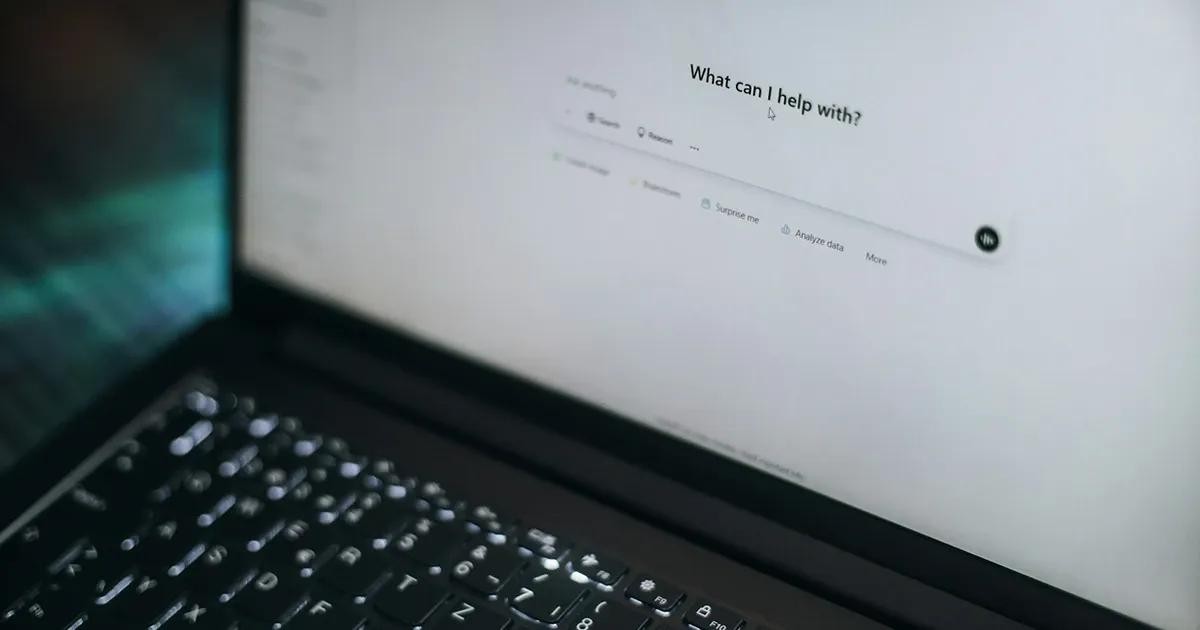Have you ever thought about what goes on behind the scenes of the applications that you download? Before you get a cool new update in your App Store or before a new app is released to the public, a big effort is made in ensuring the stability of the application so that users have the smoothest experience possible.
We know that software has to be designed and written, but that's not all. After designing the interface and writing the perfect code, the software has to be tested. Why? Let's say an app works flawlessly, every functional aspect of it does what it's supposed to do. But what happens if the developers decide to add another button to the drop-down menu? Lines of code are added in the same fashion as the previous buttons for the menu. On paper, this change shouldn't affect the software, as it doesn't break the code since it simply adds another button to the list of buttons. But when you open the app—it crashes. This is where the importance of software testing becomes evident—or smoke testing in particular.
What is smoke testing in software testing?

Smoke testing is a type of software testing that checks whether the basic functionality of an application works after a new build or update. Think of it as a quick health check for your software. If the app “smokes” (fails), it’s clear something’s wrong. If it doesn’t, it’s ready for further testing.
The term ‘smoke test’ originated in the plumbing industry, where plumbers would channel smoke into the piping system to detect any leaks or cracks and fix them. By doing so, they could confirm that the system worked before it was used by the public.
Smoke testing, often confused with sanity testing, is a type of software testing that is performed to check if the basic functionalities of a software application are working properly. The aim of smoke testing is to identify and address any major issues or defects in the software, and ensure that the application is stable enough for further testing. In smoke testing, the software build is deployed to a quality assurance environment for the testing team to verify the stability of the product/application. Smoke tests confirm that the software product can proceed with further testing and ultimately be released to the public.
Why is smoke testing important?
There are many benefits of smoke testing. For one, smoke testing helps to identify defects earlier and is cost-effective. If the test passes, the software build can be released to the public sooner, as there are less issues to be found in subsequent testing. Similarly, if the smoke test fails, the issue can be located and fixed quicker, minimizing potential damage before testing it further. This saves time, money, and effort.

Another benefit of smoke testing is that it reduces the risk of failure and is quick to do so. After testing, a progress sheet is filled and bug reports are made. This makes it easier to see which areas of the app are working and makes it easier for developers to pinpoint which exact test step triggered a bug to appear or a crash to occur.
What types of smoke tests are there?
There are three types of smoke tests:
- Manual tests. The tester writes and modifies the test cases for the software being tested. Then the tester follows these test cases and manually goes through the application, noting its behavior.
- Automated tests. These tests are run automatically using an automation testing tool. This type of smoke testing may be better to use when the project has a tighter deadline.
- Hybrid tests. Hybrid smoke testing uses a combination of manual and automated smoke tests to achieve better testing performance and greater test coverage.
Now that you know what smoke testing is and the different types of smoke testing, we can move on to comparison and why smoke testing is important and should not be overlooked.
Smoke testing vs. other testing methods
When it comes to software testing, understanding the differences between smoke testing and other testing methodologies is crucial. Each method serves a unique purpose in the software development lifecycle, and knowing when to use them can significantly improve the quality and efficiency of your software testing process.
Smoke testing vs. sanity testing
While both are quick checks, sanity testing and smoke testing serve different goals. Smoke testing focuses on verifying the basic functionality of the entire system after a new build or update. It ensures that the software build is stable enough for further testing. On the other hand, sanity testing is more targeted. It checks specific changes or bug fixes to ensure they haven’t introduced new issues. Think of smoke testing as a broad health check and sanity testing as a focused diagnostic.
Smoke testing vs. regression testing
Regression testing is more extensive than smoke testing. While smoke testing verifies the critical functionalities, regression testing ensures that new changes haven’t broken existing functionality.
For example, if a new feature is added, regression testing will test not only the new feature but also all related features to ensure nothing has been affected. Smoke testing, in contrast, is a quick check to confirm the build is stable enough for subsequent testing phases.
Smoke testing vs. acceptance testing
Acceptance testing is all about meeting user requirements. It ensures the software meets the needs of end-users and stakeholders. Smoke testing, however, is more technical. It checks whether the basic functionality works as intended before moving to more detailed testing. While acceptance testing answers the question, “Does this software meet user expectations?” smoke testing answers, “Is this software stable enough to test further?”
Why these differences matter?
Understanding these distinctions helps development and testing teams allocate resources effectively. For instance, smoke testing is ideal for catching major issues early, while regression testing is better suited for ensuring long-term stability. By combining these testing methods, teams can create a robust testing process that delivers high-quality software.
What are the advantages of smoke testing?
One of the key advantages of smoke testing is its ability to quickly identify major issues in the basic functionality of an application. By focusing on the core features, smoke testing ensures that the software build is stable enough for further testing. This early detection of problems saves significant time and effort, as fixing bugs at this stage is far simpler and less costly than addressing them later in the development cycle.
Another benefit is its efficiency. Smoke testing is designed to be fast, providing quick feedback on the stability of a build. Whether performed manually or through automated smoke tests, the process is streamlined to focus on the most critical aspects of the application. This makes it particularly useful in agile and DevOps environments, where rapid iterations and continuous integration are essential.
Additionally, smoke testing helps prevent wasted effort by acting as a gatekeeper. If the smoke test fails, it signals that the build has significant issues, allowing development teams to address them before moving to more detailed testing. This ensures that testing teams don’t waste time on unstable builds, improving overall efficiency.
Finally, a successful smoke test builds confidence among stakeholders. By verifying that the basic functionality works as intended, it reassures teams that the application is on the right track and ready for subsequent testing phases. This is especially important in fast-paced development environments, where frequent releases are expected.
What are the disadvantages of smoke testing?
The main disadvantage of smoke testing is that it can’t cover every functional and non-functional aspect of an application. As previously discussed, smoke testing will check whether the main functions are operating correctly and may assess some areas or functions that are prone to issues, if this has been predefined.
Though smoke testing is quick, for large-scale projects that rely only on manual testing, then the testing process might take longer to execute. This means that more effort may be required from the testing team and the developers, which in turn would make the process more expensive.
Additionally, even if the test passes, it doesn't guarantee a 100% error or bug-free environment. Test cases used in smoke testing usually specify the number of times a function should be tested. For example, let's say the function needs to be tested 10 times. If the function passes the test 10 times, it is considered successful. But what happens if the application crashes on the 11th test? This is why smoke testing cannot guarantee that the application will be completely free of issues and bugs.
How to perform smoke testing (A quick guide)
Step 1: Identify the scope. Determine the critical functionalities to test. For example, in a banking app, this could include login, balance check, and fund transfer. Focus on features that are essential for the app to function properly. This step ensures that your smoke testing process is targeted and efficient, saving time and effort.
Step 2: Write test cases. Create test cases that cover the identified functionalities. For instance, “Verify that users can log in with valid credentials.” Make sure your test cases are clear, concise, and easy to execute. If you’re using automated smoke tests, ensure the scripts are well-documented and reusable for future builds.
Step 3: Run smoke tests. Execute the test cases manually or using automation tools. The goal is to check if the basic functionality works. If you’re performing manual smoke tests, follow the steps very thoroughly and document any issues. For automated tests, run the scripts and review the results for any failures. This step is crucial for identifying major issues early in the development cycle.
Step 4: Analyze results. If the smoke test fails, stop further testing and fix the issues. Use the results to pinpoint the root cause of the problem, whether it’s a coding error, integration issue, or configuration problem. If the test passes, proceed to subsequent testing phases like regression testing or integration testing. This step ensures that only stable builds move forward, saving time and resources.
Step 5: Document and report. After completing the smoke testing process, document the results and share them with the development and testing teams. Include details like which test cases passed or failed, any critical issues found, and recommendations for fixes. This documentation is essential for maintaining transparency and ensuring that everyone is on the same page.
Pro tip from TestDevLab: Automate where possible. If your project involves frequent builds, consider using automated smoke tests. These tests can be integrated into your CI/CD pipeline, allowing you to run smoke tests automatically whenever a new build is deployed. This not only speeds up the testing process but also ensures consistent and reliable results.
Frequently asked questions
1. What happens when a smoke test fails?
If a smoke test fails, it means there are critical issues that need immediate attention. The testing teams will stop further testing and work with development teams to fix the problems. Once the issues are resolved, the smoke testing process can be repeated.
2. What is the primary objective of smoke testing?
The primary objective of smoke testing is to verify the basic functionality of a software build before further testing.
3. Who should perform smoke testing?
Smoke testing is usually performed by testing teams or development teams in the early stages of the development process.
Conclusion
While smoke testing is a quick and efficient way to ensure the stability of a software build and identify major defects early on, smoke testing alone cannot uncover all software issues. Instead, it should be used in conjunction with other testing methods to deliver the best app experience to consumers. Nevertheless, smoke testing is an important part of the software testing process and is a great way to streamline testing efforts.
Looking for experienced software testers who can help you to detect any software issues and deliver a high-quality product to users? Contact us with your project details and find out how we can be of service.



